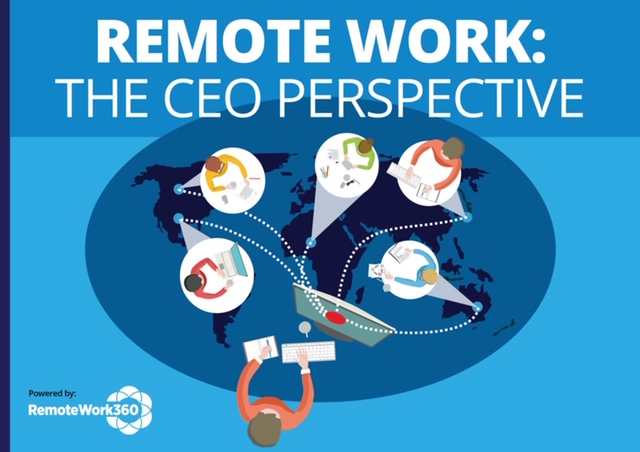Welcome to the New Normal - Say Hello to "The Hybrid Worker"
- Home
- Supplier Directory
- Attendance & Monitoring
- Collaboration & Communication
- Cloud Telephony & VOIP
- Collaboration & Secure File Sharing
- Communication Software
- Creative Tools
- Culture Building
- Interactive presentations/screen sharing
- Messaging Tools
- Online Training
- Productivity
- Project Management
- Shared workspaces
- Time Tracking
- Video Conferencing
- Virtual Water Cooler
- Web Developer tools
- Finance/Accounting
- HR/Talent Management
- IT
- Managing Remote Teams
- Productivity
- Project Management
- Remote Workplace Wellness
- Sales & Marketing
- eNewsletter
- Events / Education
- About Us
- News
HR/Talent Management, Top Story
ByMike Kind
Hybrid work: a glimpse at the future?

During the October 2020 CEO of the Year awarded by Chief Executive Magazine, Michael Dell, founder of Dell Computer stated –
“We’ve had a glimpse of the future these last 8 months and it has sort of given us a view of what 2025 might have looked like. I think we’ve sort have been sling shotted into a new way of thinking about the world. We all need to figure out how we go faster to the future.”
The potential resurgence of the Coronavirus this winter is leading to even further uncertainty for company leaders as they try to envision their future work environments. Many unanswered questions remain and each company is facing a unique set of challenges.
The Four primary questions CEOs are asking themselves are:
1. When will my employees return to the office?
2. What will my future work environment look like?
3. Can a hybrid worker be effective for my company?
4. Can a hybrid work model work for my company?
The answer to the first question depends on many factors that are simply out of anyone’s control and is therefore difficult to formulate.
The answer to the other questions, on the other hand, can and should be worked out by CEOs and business leaders now.
And yet, these questions and their answers are still quite complex, and there is no single correct answer for all companies. For example:
● Companies such as Facebook and Twitter have stated that employees have exceeded their efficiency expectations working remotely. As such, they are questioning whether they need to return to a traditional office or work environment at all.
● Conversely, and to illustrate the current level of uncertainty, one of the country’s most widely respected CEOs, Jamie Dimon from JP Morgan, has vacillated between a need to return to the office and an ability to continue work-from-home efforts at least to some degree. Specifically:
o He stated in a September 2020 Bloomberg Article that “It is time to get people back to the office.” He went on to say that the bank has seen “alienation” among younger workers, and he worries about “a lot more damage by people staying home” in broader society.
o Then, just 3 weeks later, he tempered this statement in another article stating, “As many as 40% of staffers could work from home even after the pandemic, with some on rotations in and out of the office. Work-from-home has to work for clients and customers not just for employees.”
Clearly no one has made any final decisions. However, we can shed some light on a thought process that can facilitate your next steps. The nature of office work itself falls into two categories –

- Task oriented jobs – encompass a certain number of predefined steps to achieve a desired outcome. An example of these types of office worker jobs could be call center jobs such as customer service or technical support and accounting jobs such as collections and payables.
- Strategically-oriented jobs – can be broken down into additional subcategories but the common thread among these types of jobs is that they require COLLABORATION.
Working collaboratively, remotely
The concept of “collaborative job components” is in essence what Jamie Dimon was referring to when he spoke of “alienation among younger workers.” It is extremely difficult for an individual to achieve the full value of a collaborative environment working remotely even with technology advancements and video conferencing. Nothing will ever replace the value of human interaction to garner experience and learning. Think of the nation’s educational institutions and how students are faring with remote learning. In essence, it’s the same premise.
To illustrate how important this is to some organizations, I’d like to share two recent experiences with you –
- One of my associates’ sons was recently hired right out of college as a programmer for a large video game company. His son has been working remotely since June as an intern, and, when he was hired full time, they REQUIRED him to move from his home state to North Carolina where their headquarters is located, even though they plan to continue working remotely until June of next year. Why make the move now? From the organization’s perspective, they determined the close proximity will benefit their new employees and organization alike from an administrative standpoint as well as from a “socialization and culturalization” perspective simply by being closer to headquarters.
2. Speaking of company culture, a former colleague of mine was hired as a VP of one of the largest investment advisory and financial institutions in the country. In his new role, he was specifically told to spend the first 90 days simply getting a feel for the corporate culture. 90 DAYS! I know this wasn’t the requirement of all new hires, but it is interesting that at the VP level where he was going to have direct reports, the company was willing to invest 90 days into a VP to insure that they aligned to the company’s culture.
Can companies achieve these important objectives by having their employees work remotely in perpetuity? Probably not.

Seeking Balance
While there are objectives that would be difficult to achieve in an exclusively remote environment, remote work has shown some positives (and negatives) since being implemented in a larger segment of businesses and among a variety of employee roles due to this year’s pandemic.
Positives
Employees found themselves being as or more productive than in the office.
An elimination of time spent commuting has led to better-work life balance
Negatives
Some have been less productive at home – especially with children remote learning.
The presence of a commute, despite consuming employee time, creates a separate between work and home and improves work-home balance for some employees.
In other words, arguments for or against remote work can be made based on an individual’s unique set of circumstances.
Introducing the Hybrid Worker
As companies begin to bring employees back to the office, scenarios will remain for virtually every organization that employs office workers where at least some employees remain fully remote. However, this will be the minority of office workers.
What will be more prevalent will be employees that work remotely part time and in-office part time, allowing companies to reduce office space and overhead while ensuring a safe return to the office and greater distancing between personnel. Or, what we define as the “Hybrid Worker.”
Welcome to the New Normal – “The Hybrid Worker”
Written by: Mike Kind, CEO MyKind Advisors.

Mike has been an active investor and CEO of both manufacturing and technology companies in the Office Ergonomics space for over a decade. He can be reached at mike@mykindadvisors.com
Related Posts
An estimated 86.3% of San Francisco employees are working from home, the highest rate among 10 major ...
May 11, 2021
In the third instalment of her blog - you can catch the first, on maintaining creativity here and ...
January 22, 2021
The different “kinds” of remote: finding the right fit your business Covid-19 has turned our world ...
January 14, 2021
RemoteWork360
RemoteWork360.com is powered by Chief Executive Group, which exists to improve the performance of business leaders, build communities and strengthen society.
Latest Insights
COPYRIGHT ©2020 REMOTEWORK360. ALL RIGHTS RESERVED.



